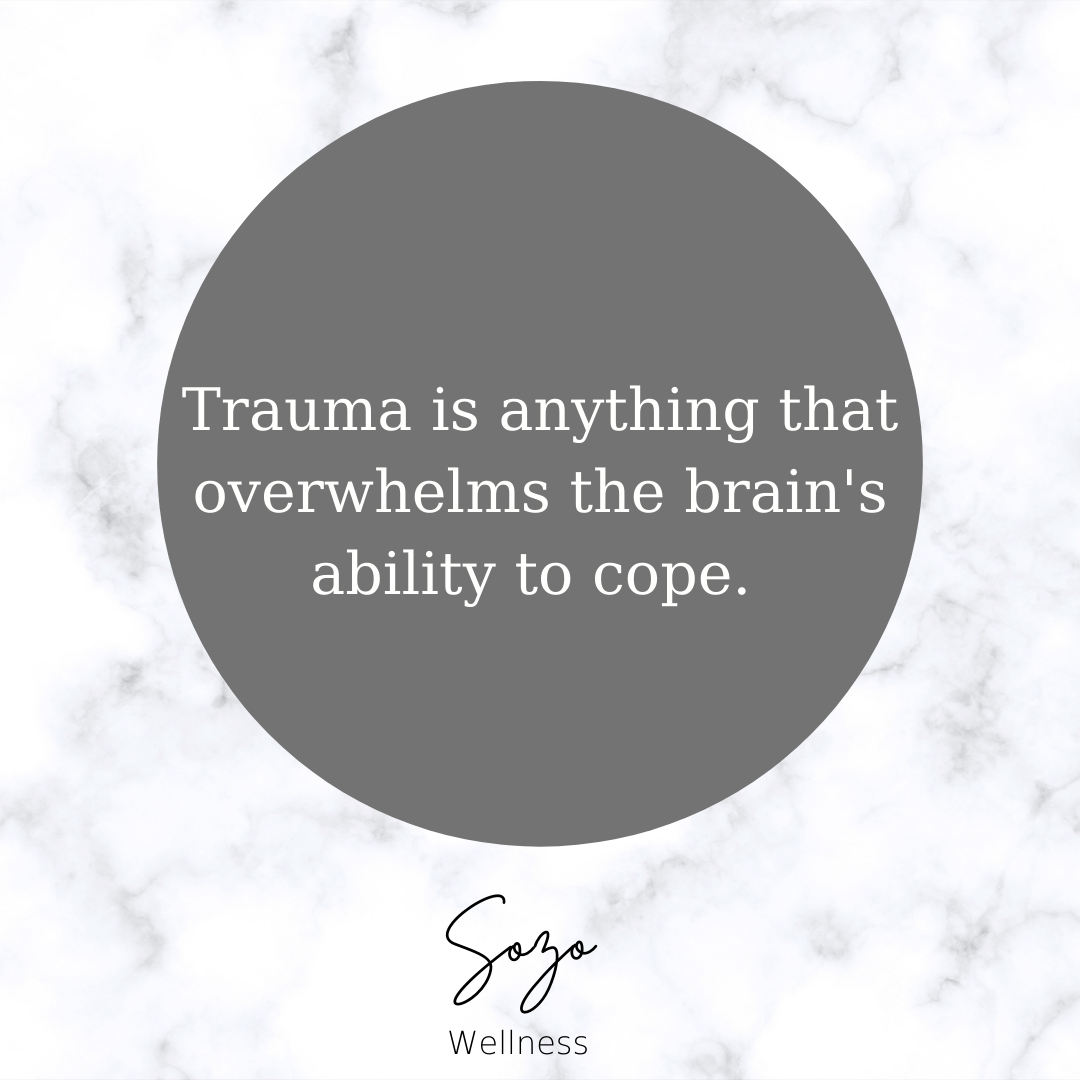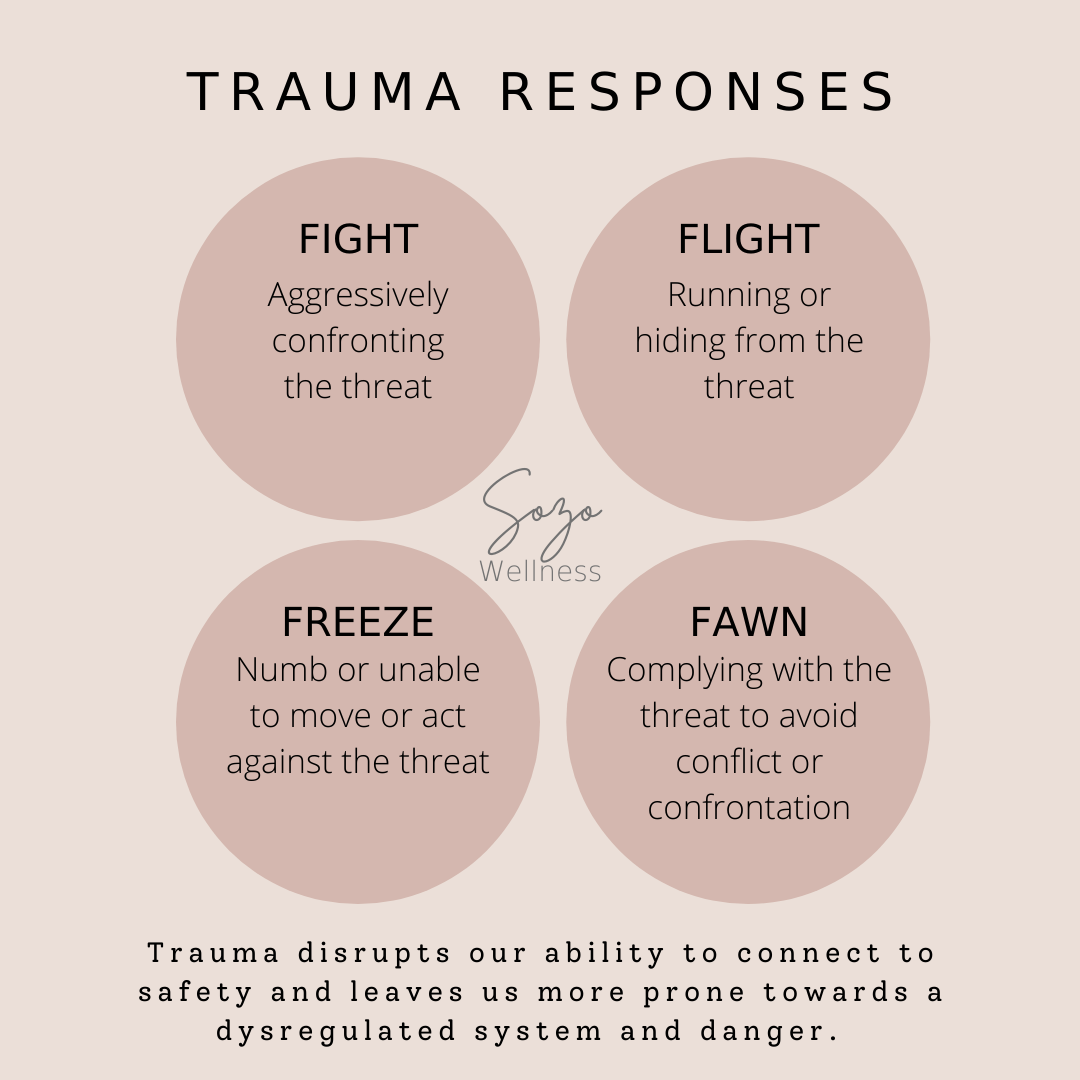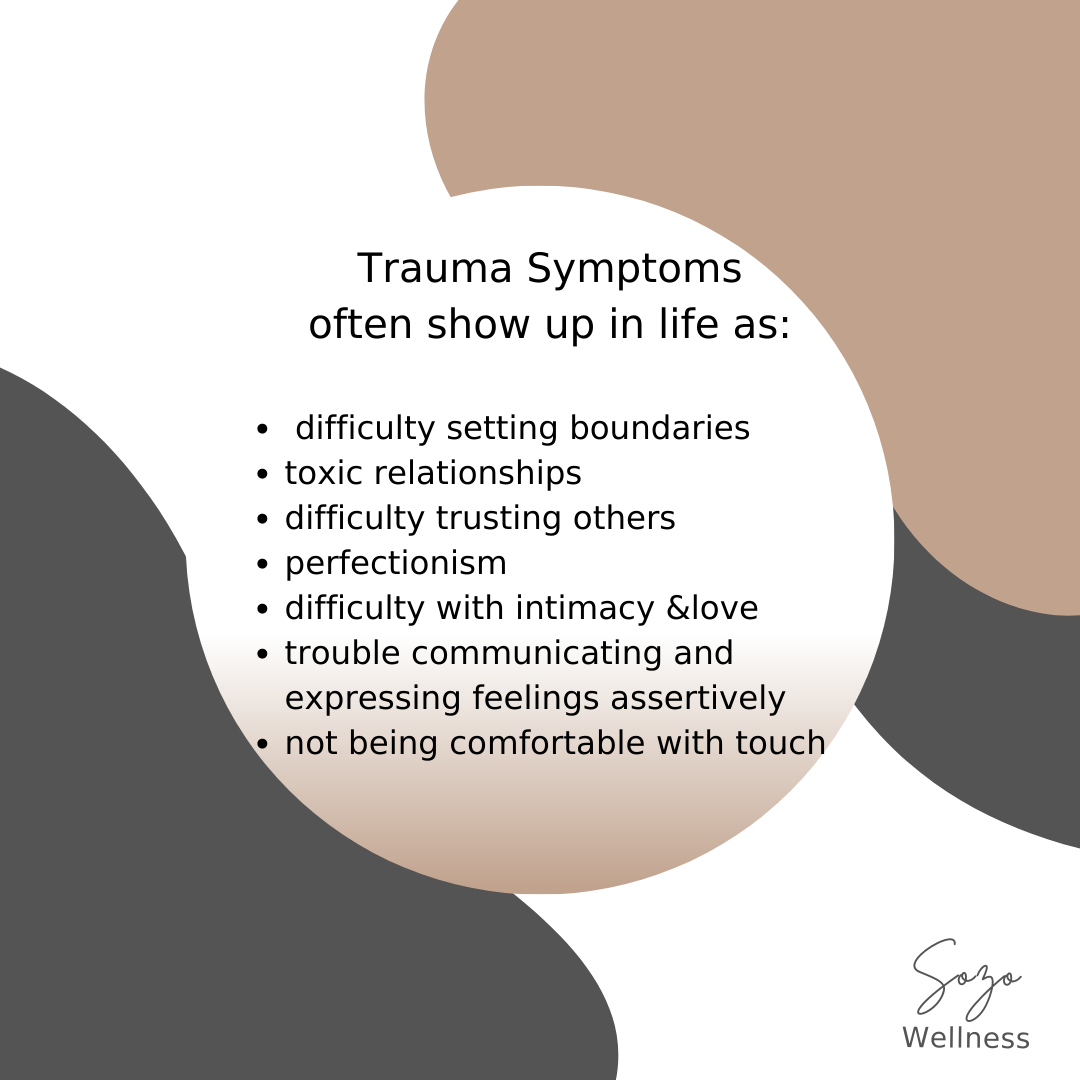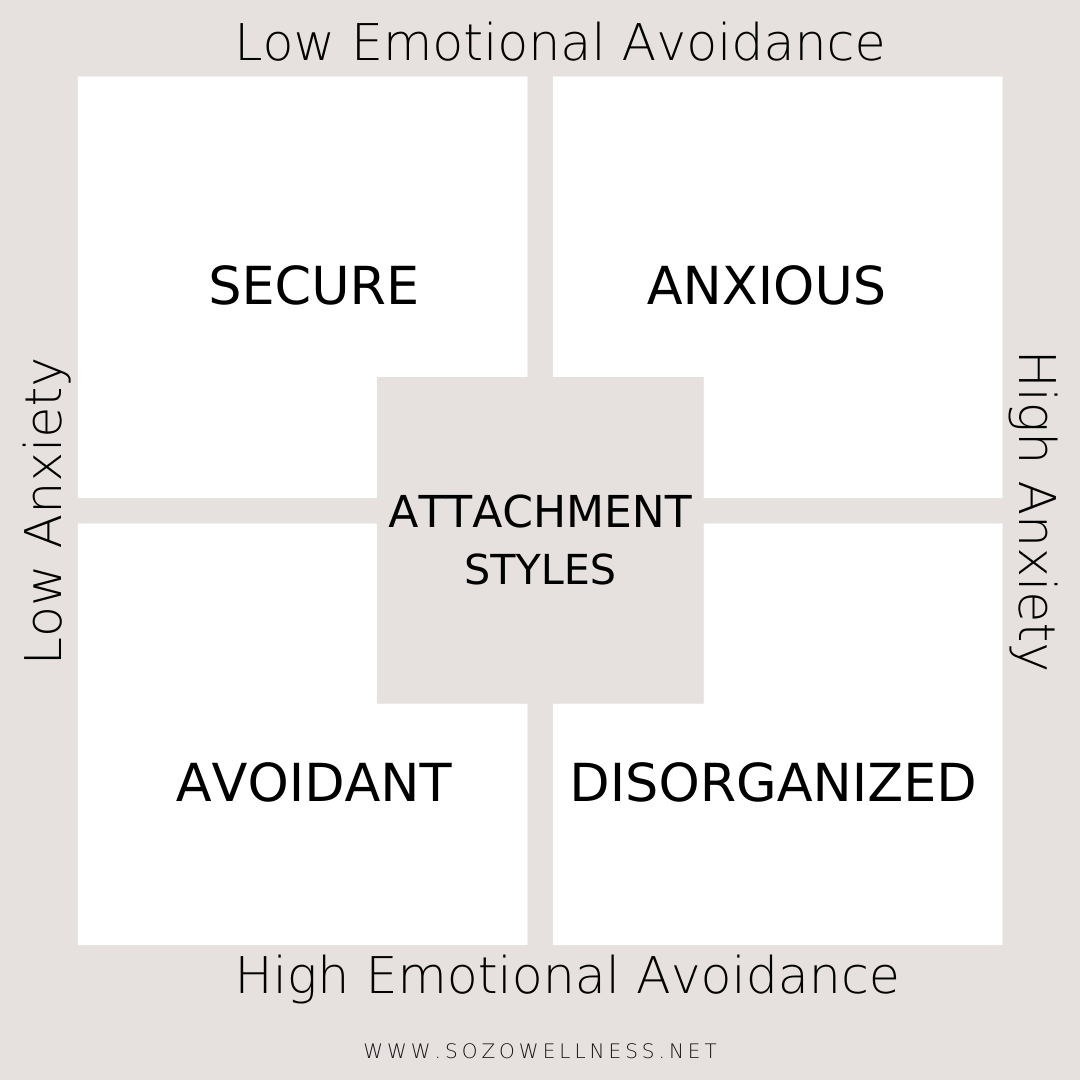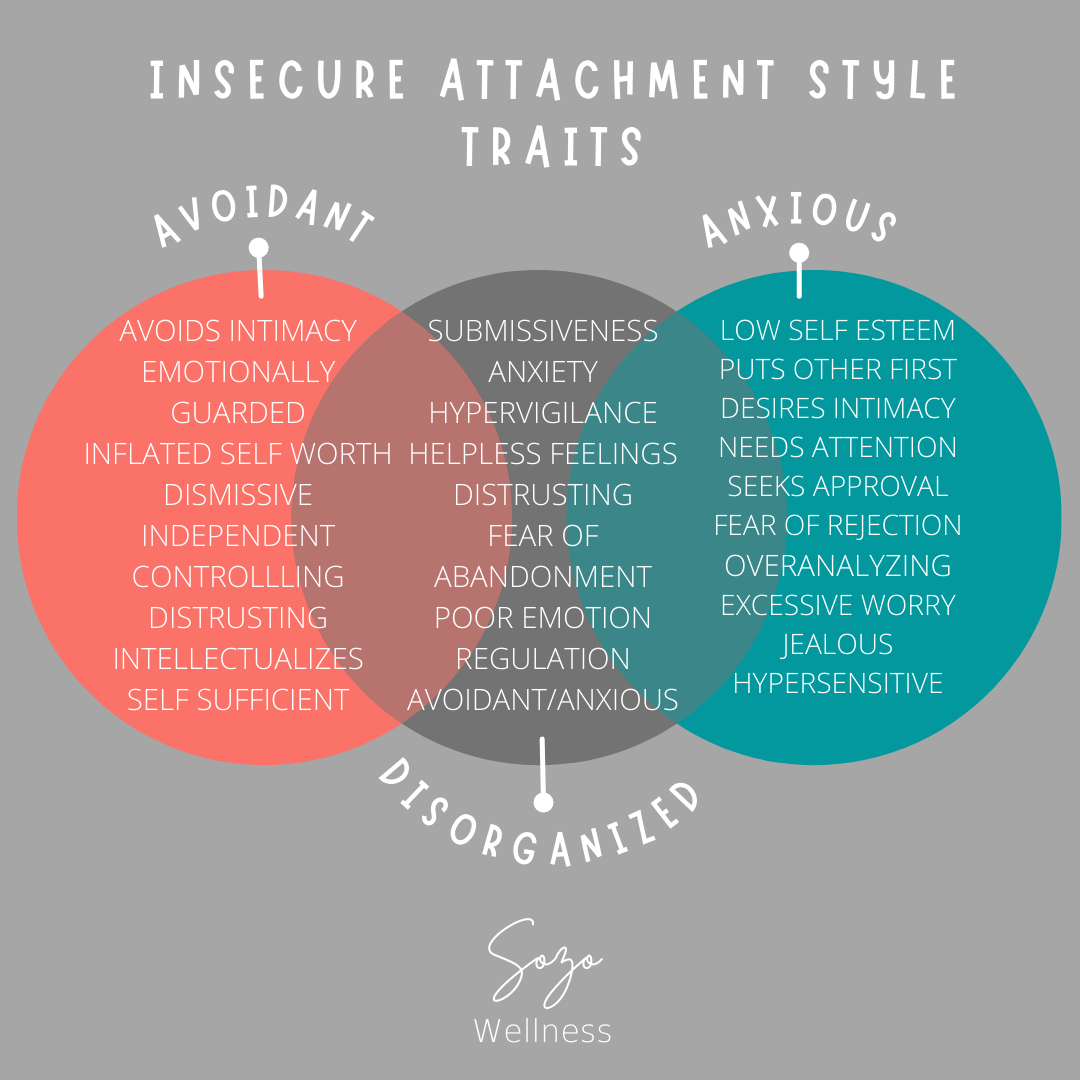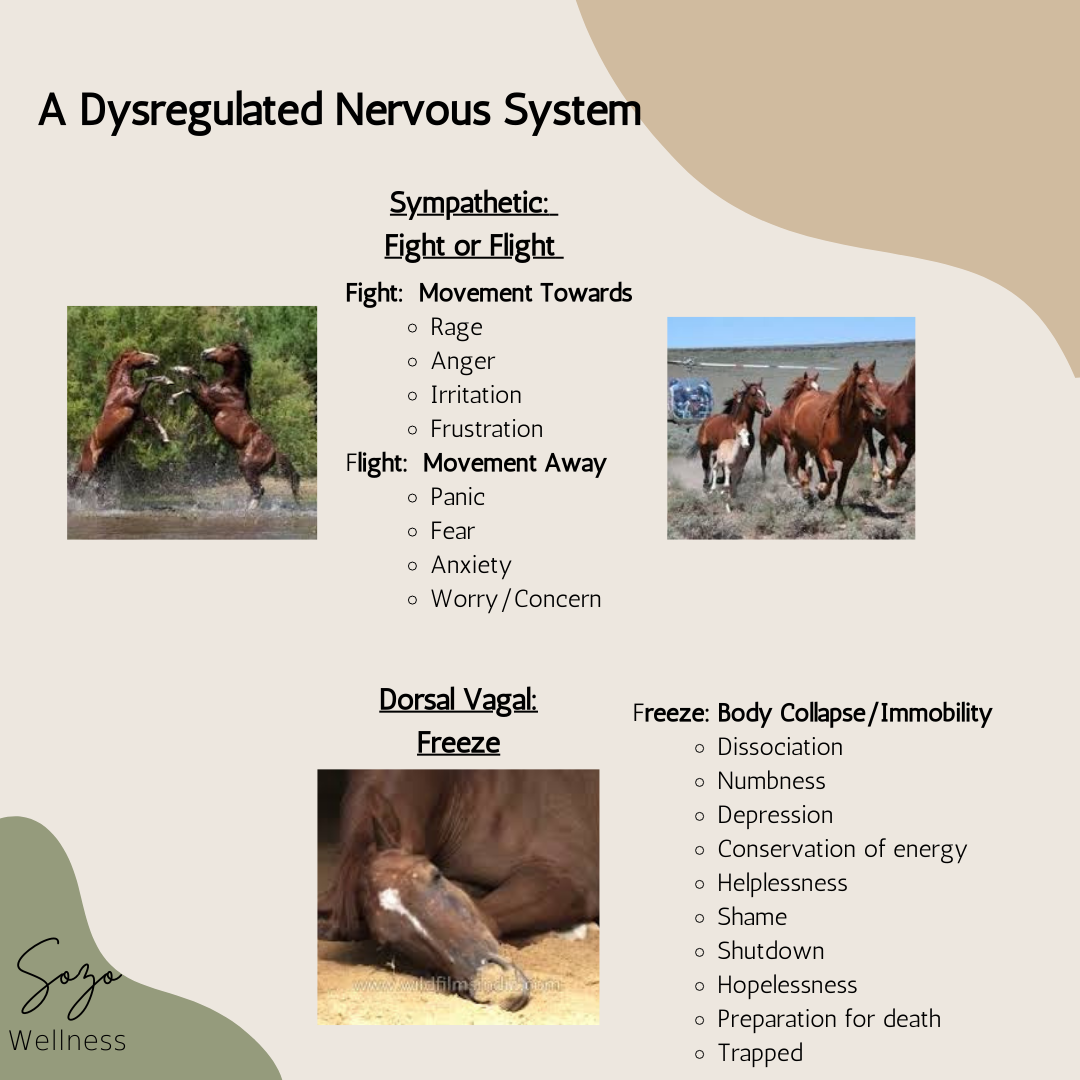Here is a description of your company. Proin ex id consectetur lobortis. Aliquam, velit vel faucibus dapibus, augue justo ullamcorper turpis, nec convallis metus nunc vel turpis.
Trauma is defined as anything that overwhelms the brain’s ability to cope.
Trauma symptoms often show up in your life in some of these ways:
difficulty setting boundaries, toxic relationships
difficulties trusting others as well as yourself at times
perfectionism
difficulties with intimacy
difficulty in relationships
trouble communicating and expressing feelings assertively
not being comfortable with physical touch
struggling with anxiety and/or depression (fight, flight freeze responses)
feeling disconnected or numb (dissociated) from self and the present
negative core beliefs of not good enough, unworthy and/or unloveable
Trauma responses of fight, flight, freeze and fawn are often re-experienced long after the originating threat is removed. Fight is when our sympathetic system is active and we are moving towards rage, anger, irritation and frustration in efforts to confront the threat. Flight is when our sympathetic system is active and we are moving away from panic, fear, anxiety, worry or concern in efforts to run or hide from the threat. Freeze is when our dorsal vagal system has taken over and we are immobile or collapsed in dissociation, numbness, depression, conservation of energy, helplessness, shame, shutdown, hopelessness, preparation for death or trapped as we are unable to move or act against the threat. And fawn is a combined system response when we seek to appease or avoid confrontation by people pleasing, flattering others, struggling with low self worth, avoiding conflict, being unable to say how you really think or feel, always saying “yes”, lack of boundaries, feeling taken advantage of and overly concerned of being accepted or approved of by others in efforts to comply with or minimize the threat to avoid conflict and confrontation. Fawn is most often associated with complex post traumatic stress disorder.
All of these represent an autonomic nervous system that has been alerted to distress. This is our body’s way of attempting to keep us safe and secure. However, when we have experienced trauma it often becomes hijacked and is unable to self regulate. Therapy can help us understand the messaging behind the symptoms our bodies are experiencing as well as assist us through the journey of processing through those uncomfortable sensations. It is vital that we learn to co-regulate and balance our systems with a safe and secure person.
Evidenced-based Trauma Therapy Modality is EMDR
What is EMDR?
Eye Movement Desensitization and Reprocessing (EMDR) is an integrative psychotherapy approach that has been extensively researched and proven effective for the treatment of trauma and PTSD. By using bi-lateral stimulation that engages the right brain (alert/emotions) and left brain (logic/cognitions) to communicate which allows the EMDR process to lower the hi-jacked emotions associated with traumatic events and negative beliefs and replace them with positive cognitions that support wellness and healing. There are several bi-lateral methods including music/sounds, tapping and lights that can be tailored to the client’s preference.
Although EMDR therapy has been most supported for its effectiveness in treatment trauma, it is also extremely effective in addressing fears, anxiety and stress related to performance. EMDR can be a great modality to help clients achieve whatever goals they wish to work towards including performance enhancement in sports.
EMDRIA definition of EMDR:
EMDR is an evidence-based psychotherapy for Post-traumatic Stress Disorder (PTSD). In addition, successful outcomes are well-documented in the literature for EMDR treatment of other psychiatric disorders, mental health problems, and somatic symptoms. The model on which EMDR is based, Adaptive Information Processing (AIP), posits that much of psychopathology is due to the maladaptive encoding of and/or incomplete processing of traumatic or disturbing adverse life experiences. This impairs the client’s ability to integrate these experiences in an adaptive manner. The eight-phase, three-pronged process of EMDR facilitates the resumption of normal information processing and integration. This treatment approach, which targets past experience, current triggers, and future potential challenges, results in the alleviation of presenting symptoms, a decrease or elimination of distress from the disturbing memory, improved view of the self, relief from bodily disturbance, and resolution of present and future anticipated triggers.
